Reunions Leave 2 Koreas in Tears200 Families Meet Relatives in Seoul and Pyongyang
▶ By Sah Dong-seok
One hundred people from both Koreas flew to the other? capital on air flights that took less than one hour to reach their destinations on Nov. 30.
The heart-breaking scenes of family reunions at the Convention & Exhibition Center in Seoul and the Pyongyang Gymnasium in the North Korean capital left the two Koreas in tears.
After a separation of 50 years, the reunited families were conspicuously euphor ic, also sharing their long-lasting pains.
The tearful reunion drama began with the arrival of a North Korean passenger jet carrying 100 split families alongwith North Korean officials and reporters at the Kimpo International Airport at 10:57 a.m. The Russian-made Il-62 jet was the first North Korean passenger plane ever to land at the airport in southwestern Seoul.
The first batch of North Koreans to emerge from the jet was one of reporters, including cameramen, who scrambled to cover the historic event. Then Ryu Mi-yong, the 78-year-old head of the North Korean family reunion delegation appeared on the trap first.
Ryu, who defected to the North with her husband from the United States in 1986, was greeted by Pong Doo-wan, vice chief of South Korean Red Cross. She waved to the crowd while other North Koreans exited from the plane.
Soon after, Ryu and Pong proceeded to the airport? lounge for brief talks. Asked how she felt about coming back to Seoul, Ryu expressed hope that the two Koreas would join forces to realize the national reunification.
She bluntly replied in English, `` I am very happy,亮 when asked about the family reunion by a foreign journalist.
The North Korean jet took off from the Kimpo airport around 1 p.m., one hour later than scheduled, this time carrying 151 South Koreans to North Korea. Although the plane? departure was behind schedule, the family reunion in the North began at 4 p.m. on schedule.
Then, there were reunions between husbands and wives, parents and sons and daughters and brothers and sisters on both sides.
Hundreds of South Koreans first took their seats at the third-floor convention hall at the COEX past 3:30 p.m. to wait for their North Korean families. In the 800-pyong (one pyong equals 3.3 square meters) hall, 100 round tables were already arranged.
There were six chairs for a table considering that the maximum number of South Korean people to be reunited was limited to five per family. All the chairs were without armrests to allow the family members to embrace while seated.
Also on the table were tissues, handkerchiefs, tobacco produced under an inter-Korean joint program and bottles of mineral water imported from the North Each table had an assigned number and a name to help North Koreans find the correct ones.
Soon Ryu, the North Korean female leader, entered the hall as the head of the North Korean delegation. The North Koreans followed Ryu in the order of the assigned number and were led to their respective families while seated by South Korean Red Cross officials.
Then, tears of joy and anguish engulfed the convention hall. The South Koreans immediately recognized their approaching families from the North and immersed into each other? arms, bursting into tears.
The reunions, the first since 1985, came delightfully for the lucky Koreans who were selected in a laborious process but Oh Yong-jae, a North Korean poet, felt something important missing.
Oh, who came to Seoul as one in the team of 100 North Koreans for four-day reunions with family members in South Korea, couldn? see his mother who had apparently died five years ago. Instead, Oh, 66, met his 62-year-old younger brother living in Seoul.
While his mother was still alive in the South, the North Korean poet had written,``Mom, please don? get older. I wish I could stop time until the nation reunifies and we can get together again.亮
Each of the 100 families in the convention hall?nd another group of 100 families having a get-together in Pyongyang?as not without its own tragic story.
The reunion came too late for 100-year-old Cho Won-ho, who hardly recognized her 70-year-old son, Lee Chong-pil, because of her Alzheimer? disease and laborious trip to the Sheraton Walker Hill Hotel. The son repeatedly asked whether his mother could recognize him but the elderly mother remained listless.
Lee Tok-man, 87, who was battling cancer at a Seoul hospital, was delighted to see his 65-year-old son, Ahn Sun-hwan, from North Korea. Lee? son disappeared when he was a middle school senior during the 1950-53 Korean War.
Since her son went missing, the mother has never moved, hoping that her son would find his way home on coming back.
Family reunions are a pressing issue between the two Koreas as many aging family members have only a few years remaining. So far, many people have already died without making any contact with their famili s and relatives on either side.
스마터리빙
more [ 건강]
[ 건강]이제 혈관 건강도 챙기자!
[현대해운]우리 눈에 보이지 않기 때문에 혈관 건강을 챙기는 것은 결코 쉽지 않은데요. 여러분은 혈관 건강을 유지하기 위해 어떤 노력을 하시나요?
 [ 건강]
[ 건강]내 몸이 건강해지는 과일궁합
 [ 라이프]
[ 라이프]벌레야 물럿거라! 천연 해충제 만들기
 [ 건강]
[ 건강]혈압 낮추는데 좋은 식품
[현대해운]혈관 건강은 주로 노화가 진행되면서 지켜야 할 문제라고 인식되어 왔습니다. 최근 생활 패턴과 식생활의 변화로 혈관의 노화 진행이 빨라지고
사람·사람들
more많이 본 기사
- “H-1B비자 10만 달러 수수료, 국익부합시 사례별로 예외허용”
- ‘남미 트럼프’ 밀레이, 유엔총회 참석 계기 트럼프와 양자회담
- 백악관 대변인 “틱톡 이사진 7명 중 6명, 미국인이 맡을 것”
- 유럽 주요 공항 탑승시스템 업체 사이버공격에 차질
- 트럼프 “아프간, 바그람기지 반환 안하면 나쁜 일 생길 것”
- 이번엔 정부조직법·방통위법…여야, 25일(한국시간) ‘3차 필버’ 충돌 예고
- MLB 김하성, 8경기 연속 안타…9회 역전 결승 득점 활약
- 찰리 커크 추모식 10만 운집할듯…행사장서 무장한 남성 체포
- 신승훈, 세월도 비껴간 동안 외모 비결?.. “집 밖에 잘 안 나가”
- 트럼프 “베네수, 미국내 ‘죄수들’ 데려가야…아니면 대가치를것”
- 지상렬, ♥16세 연하 쇼호스트와 러브라인 교환.. “자주 보고파” 설렘 MAX
- 장동혁, ‘조희대 회동설’에 “與, 반헌법적 정치테러…해산돼야”
- 민주, 트럼프에 “예산문제 대화하자…정부 셧다운시 與 책임”
- 미국인 75% “미국 잘못된 길로 간다”…공화 지지자서 크게 늘어
- 배드민턴 안세영, 10점 내리 쓸어담으며 중국 마스터스 결승행
- 애틀랜타 김하성, 시즌 4호 홈런 작렬…7경기 연속 안타 행진
- “’웨이트조끼 입은 여성들’ 표심, 내년 중간선거 중요변수”
- 해리스 前부통령 회고록 ‘107일’ 내용에 민주당 인사들 반발
- “전문직비자(H-1B) 수수료 1인 … 4
- 美기업들, 전문직비자 변경에 경악… “외국 간 직원 즉각 복귀”
- 미국 H-1B 비자 규제 강화…한국,… 2
- 현빈은 ‘독보적’ 손예진도 남은 음식 싸가게 만든다
- 정청래, 尹에 ‘무인기 의혹’ 소환통보 특검에 “끝까지 파헤쳐야”
- 법원, 트럼프 측에 “소장 너무 길고 장황…다시 써와라”
- “손흥민 잡았어야지” 해트트릭 활약에 토트넘 땅을 친다... 英현지 ‘폭풍 비난’
- 트럼프, 하명 표적수사 진전없자 ‘검사장 해임’
- 통일교 의혹 한학자 총재 22일 구속기로…특검 수사 분수령
- 지현우, ♥이세희와 열애설에 의미심장한 미소..아리송한 답변에 ‘갸웃’
- ‘호주 전용 전문직 취업비자’ 대상에 한국인 포함 법안 재추진
- 트럼프, 언론 비판보도에 “진짜 불법”…NYT “독재자 따라 하나”
- 트럼프 정부 ‘보도지침’… “승인 안받고 취재하면 출입증 취소”
- “트럼프, US스틸 미 공장 가동 중단 저지…황금주 권한 행사”
- 팀 쿡 CEO “최신 아이폰 가격 인상에 관세 반영 안 됐다”
- 중학생들 등굣길 학교 정문서 불체자 추격·체포 ‘경악’
- 이민법원 한인 판사까지 쫓겨났다 1
- 한국, 야구 세계 랭킹 4위 유지…1∼3위는 일본·대만·미국
- 뉴욕증시, 금리인하 훈풍에 3대지수 최고치 마감…다우 0.4%↑
- 이재명 대통령, 22∼26일 뉴욕 방… 1
- 전문직 취업비자 수수료 ‘10만 달러’로 올린다
- ‘몰아치기 능력자’ 손흥민, 첫 홈경기 득점+3경기 연속골 노린다
- ‘여왕의 집’ 함은정 “티아라 효민 따라 ‘결혼’ 40세 전엔 하고파.. ‘우결’ 이장우 오빠 결혼식 갈 것”
- [전문가 에세이] 뇌 세포를 사망시키는 8가지 습관
- 이수근, ‘결혼’ 김병만♥현은재에 전한 진심 “많은 일 있었지만 잘 이겨내”
- “트럼프 정부, 틱톡 합의로 수수료 수십억달러 챙길 듯”
- 연방정부 셧다운 우려 급부상
- 트럼프 “지정 테러조직 마약 운반선 격침해 3명 살해”
- “미중 정상통화서 틱톡 문제 ‘시각차’…구체적 내용 공개 안돼”
- 미국 의회서 한국인 전문직 취업비자 법안 추가 발의
- ‘백신회의론’ 美장관이 구성한 자문위… 3
- IT 강국의 그림자… KT 서버도 해킹에 뚫렸다
1/5지식톡

-
 ACSL 국제 컴퓨터 과학 대회, …
0
ACSL 국제 컴퓨터 과학 대회, …
0웹사이트 : www.eduspot.co.kr 카카오톡 상담하기 : https://pf.kakao.com/_BEQWxb블로그 : https://blog.naver.com/eduspotmain안녕하세요, 에듀스팟입니다…
-
 바디프렌드 안마의자 창고 리퍼브 세…
0
바디프렌드 안마의자 창고 리퍼브 세…
0거의 새제품급 리퍼브 안마의자 대방출 한다고 합니다!8월 23일(토)…24일(일) 단 이틀!특가 판매가Famille: $500 ~ $1,000Falcon: $1,500 ~ $2,500픽업 & 배송직접 픽업 가능LA…
-
 바디프렌드 안마의자 창고 리퍼브 세…
0
바디프렌드 안마의자 창고 리퍼브 세…
0거의 새제품급 리퍼브 안마의자 대방출 한다고 합니다!8월 23일(토)…24일(일) 단 이틀!특가 판매가Famille: $500 ~ $1,000Falcon: $1,500 ~ $2,500픽업 & 배송직접 픽업 가능LA…
-
 미주 한인 세무사 전국 대회- 20…
0
미주 한인 세무사 전국 대회- 20…
02025 전미한인세무사협회 컨퍼런스2025 THEME: Navigating New Frontiers(국제조세, 부동산투자, 블루오션 시장이라는 키워드를 아우르면서, 세무사들이 기존의 영역을 넘어 새로운 기회를 탐색…
-
 애틀랜타/조지아로 이사 예정이신가요…
0
애틀랜타/조지아로 이사 예정이신가요…
0
케이타운 1번가
오피니언

6가 ‘차 없는 거리’, 타운 발전 계기로

뿌리교육의 최전선, 한국어 교육의 중요성
 김미선 서북미문인협회 회장, 시인
김미선 서북미문인협회 회장, 시인 [한국춘추] 케데헌 속 호작도, 그리고 민화의 세계
 제임스 조 풀러튼 교육위원
제임스 조 풀러튼 교육위원 [기고] 현대·LG 공장 이민 단속, 한인사회는 어떻게 대처해야 하는가?
 이희숙 시인·수필가
이희숙 시인·수필가 [금요단상] 무대는 그들로 완성된다
 신상철 / 고려대 고고미술사학과 교수
신상철 / 고려대 고고미술사학과 교수 [미술 다시보기] 고요하고 풍요로운 정물
 홍병문 / 서울경제 논설위원
홍병문 / 서울경제 논설위원[만화경] 코닥 몰락과 닮은 포토샵 위기
 한 영 재미수필가협회 회장
한 영 재미수필가협회 회장 [한영의 독서칼럼] 눈먼 자들의 도시
 김응화 무용연구소 원장
김응화 무용연구소 원장 [기고] 변화되는 아이들, 인공지능 시대의 예술 교육
1/3지사별 뉴스
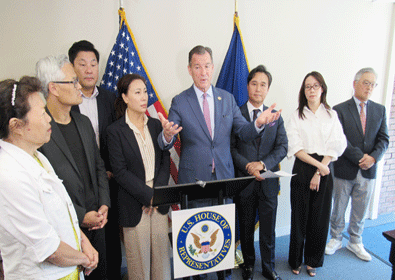
‘호주 전용 전문직 취업비자’ 대상에 한국인 포함 법안 재추진
E-4에 E-3 추가 투트랙 진행이민당국의 조지아주 현대 전기차 배터리 공장 단속 사태에 따른 후폭풍이 거세게 일고 있는 가운데 호주 전용 전…
전문직 취업비자 수수료 ‘10만 달러’로 올린다

VA 사전투표 시작…11월 1일까지
오는 11월 4일 버지니아 선거를 앞두고 오늘(19일)부터 11월 1일까지 사전투표(Early Voting)가 실시된다. 사전투표는 미리 투표…
중학생들 등굣길 학교 정문서 불체자 추격·체포 ‘경악’

“전문직비자(H-1B) 수수료 1인 年 10만 달러” 한미비자협상 영향 주목
도널드 트럼프 행정부가 ‘전문직 비자’로 불리는 H-1B 비자 수수료를 1인당 연간 10만 달러(약 1억4천만원)로 대폭 증액하기로 했다.트럼…
22기 SF 평통 신청 마감, 정원 미달**추후 추가모집

오늘 하루 이 창 열지 않음 닫기 








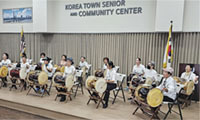
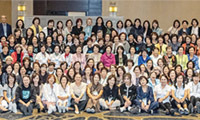




















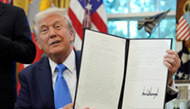

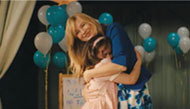


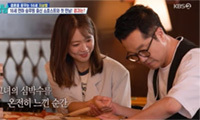
















.png)


댓글 안에 당신의 성숙함도 담아 주세요.
'오늘의 한마디'는 기사에 대하여 자신의 생각을 말하고 남의 생각을 들으며 서로 다양한 의견을 나누는 공간입니다. 그러나 간혹 불건전한 내용을 올리시는 분들이 계셔서 건전한 인터넷문화 정착을 위해 아래와 같은 운영원칙을 적용합니다.
자체 모니터링을 통해 아래에 해당하는 내용이 포함된 댓글이 발견되면 예고없이 삭제 조치를 하겠습니다.
불건전한 댓글을 올리거나, 이름에 비속어 및 상대방의 불쾌감을 주는 단어를 사용, 유명인 또는 특정 일반인을 사칭하는 경우 이용에 대한 차단 제재를 받을 수 있습니다. 차단될 경우, 일주일간 댓글을 달수 없게 됩니다.
명예훼손, 개인정보 유출, 욕설 등 법률에 위반되는 댓글은 관계 법령에 의거 민형사상 처벌을 받을 수 있으니 이용에 주의를 부탁드립니다.
Close
x